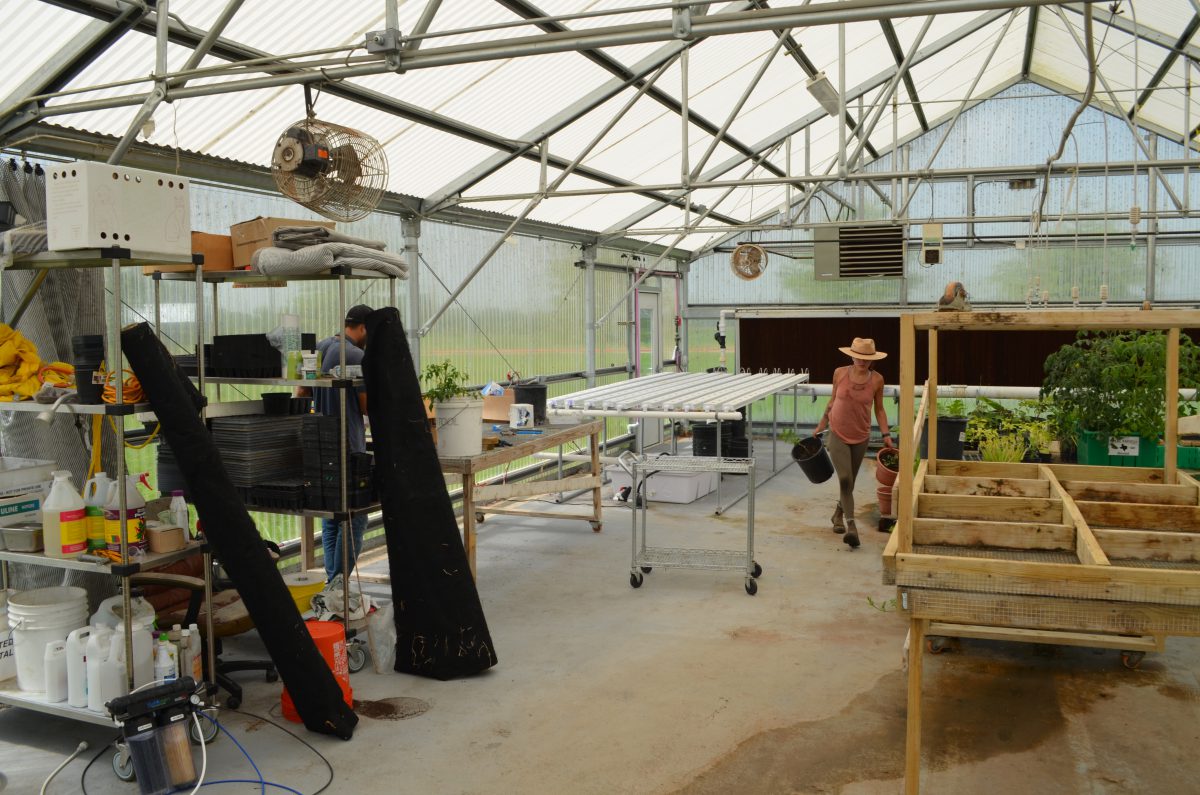Category: Photos
-

Weather Affecting ACC’s Agriculture Department
Story by Nick Brown Edited by Pete Ramirez Austin Community College’s 17-acre Sustainable Student Farm, located at ACC’s Elgin campus, is home to a herd of sheep, an orchard, a greenhouse, and a small plot dedicated to vegetable production. It is also where you can often find Savannah Rugg, Department Chair of the Agricultural Sciences…
-

COVID Safety
COVID-19 has changed the way we work, eat, play, and overall live. Reporter, Marissa Greene captures some images that you may have found to be familiar during these times.
-

Ascending to New Heights
Story and Photos by: McKenna Bailey Have you ever seen a poster around an Austin Community College campus that catches your eye, but you walk right past it? No matter which campus you attend, each of the communication boards provide helpful resources, information about student organizations, and other ways to engage yourself within the community.…
-

Student Government Association takes on Washington DC
Photo Story by: Nikoo Vafaee Hello Washington DC! The E-board members from ACC’s Student Government Association recently took a trip to Washington DC to attend the American Student Government Association conference. The conference was located in their hotel which included daily workshops on how to better their leadership, make connections, and more! After all the…
-

Photo Story: Horseback Rider
Photos and Text by Justine Lockhart The heat has already started to peak, but to Anika Lockhart it doesn’t matter. Even as the sweat rolls down her face, she keeps riding, pushing herself, and her horse, onward. Lockhart has been riding horses since she was a child but she didn’t get back into it until…
-

Photo Story: Yellow Bike Project
Photo and Text by Antonio Cueto Gonzalez It started as a garage project in 1997. The idea was to release fixed-up yellow bicycles around town for anyone who needed free and convenient transportation. Twenty-two years later, Austin’s Yellow Bike Project has evolved into a story of success that has earned the non-profit organization its iconic…
-

Austin Trail of Lights 2017
Written & photos by Tracy Fuller The Austin Trail of Lights is easily one of the most recognized holiday events in the Austin area. This makes 53 years of Zilker Park hosting Trail of Lights. The Trail of Lights Foundation and Lyft will host the 4th Annual “Night Lights” Preview Party on Friday, Dec. 8.…
-

Show Review: Snow Tha Product Gettin’ It At Empire
[vc_row][vc_column][vc_column_text] Written and photos by Tracy Fuller I have been a fan of Snow Tha Product’s music for about five years now, but oddly enough, I have never seen her perform in concert. So naturally, when the opportunity arose to review this show after the Sound On Sound Fest cancellation, I jumped on it. Snow,…
-

Show Review: The Story So Far, Turnstile, & Drug Church Throw Down at The Mohawk
[vc_row][vc_column][vc_column_text]Written and photos by Taylor Kokas Despite this year’s sudden cancellation of Sound On Sound Fest, many artists were able to be rescheduled at various venues around town to perform for the live music capitol audience. The festival continued on in spirit, early that Saturday afternoon. Fans lined up on both corners of The Mohawk,…

